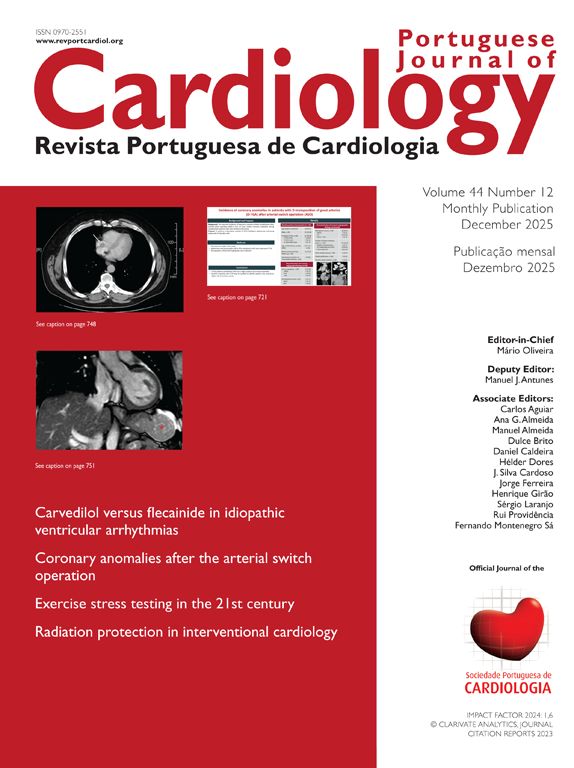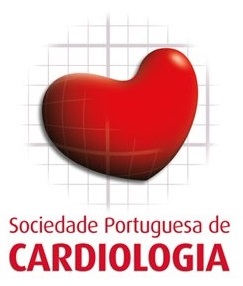Manuscripts submitted for publication should be prepared in accordance with the "Recommendations for the Conduct, Reporting, Editing, and Publication of Scholarly Work in Medical Journals" of the International Committee of Medical Journal Editors (ICMJE). This document is available at http://www.icmje.org/recommendations/.
Summary table of Revista Portuguesa de Cardiologia types of article characteristics.
Original Investigation
Original Investigation articles cover areas of clinical or basic research: Clinical trial, Meta-analysis, Intervention study, Cohort study, Case-control study, Epidemiologic assessment, Survey with high response rate, Cost-effectiveness analysis, Decision analysis, Study of screening and diagnostic tests, Other observational studies) . They should have a maximum of 5000 words, with a total of up to 15 tables and/or figures, and should be structured as follows: Graphical Abstract, Abstract (maximum 250 words; divided into Introduction and Objectives, Methods, Results and Conclusion(s)); 3-10 keywords; Introduction; Objectives; Methods; Results; Discussion; Conclusion(s); Acknowledgements, if any; References (up to 75); and figure legends, if any. Follow EQUATOR Reporting Guidelines.
Review Articles and Systematic Reviews
Review Articles should have a maximum of 5000 words, with a total of up to 15 tables and/or figures, and should be structured as follows: Abstract (maximum 250 words; unstructured); 3-10 keywords; Introduction; thematic sections at the discretion of the authors; Conclusion(s); Acknowledgements, if any; References (up to 100); and figure legends, if any.
Systematic Reviews should be structured as Introduction, Methods, Results, Discussion and Conclusion(s). The subject should be clearly defined. The objective of a systematic review should be to produce an evidence-based conclusion. The Methods should give a clear indication of the literature search strategy, data extraction, grading of evidence and analysis.
Systematic Reviews should not normally exceed 4000 words, with a total of up to 6 tables and/or figures and up to 100 references.
Authors are strongly recommended to consult the PRISMA statement (http://www.prisma-statement.org/), which is intended to help improve the reporting of systematic reviews and meta-analyses. We encourage authors to develop a systematic review protocol (e.g. following PRISMA-P) and register with PROSPERO.
Guidelines
It is recommended to consult the AGREE II instrument for which items should be reported that highlighted particular quality aspects of guideline development. In general, published statements intended to guide clinical care (e.g., guidelines, practice parameters, recommendations, consensus statements and position papers) should describe the clinical problem to be addressed, the mechanism by which the statement was generated, a review of the evidence for the statement (if available), and the statement on practice itself.
To minimize confusion and to enhance transparency, such statements should begin with the following questions, followed by brief comments addressing each question:
- What other guideline statements are available on this topic?
- Why was this guideline developed?
- How does this statement differ from existing guidelines?
- Why does this statement differ from existing guidelines?
The statement should have an unstructured abstract of up to 350 words, 3 to 10 keywords and can include up to 4000 words, a total of up to 6 tables and/or figures and up to 100 references.
Images in Cardiology
Images in Cardiology should have a maximum of 250 words, without Abstract, keywords, tables, or division into sections and up to 5 references may be included.
Snapshots
This section is intended for the publication of rare or educational cases or novel techniques in cardiology. The text should not exceed 500 words and up to 3 figures with brief captions and up to 5 references may be included. Snapshots must have no more than 3 authors.
Current Perspective
This type of manuscript is submitted upon invitation by the Editorial Board. It may cover a broad diversity of themes focusing on cardiology and healthcare: current or emerging problems, management and health policies, history of medicine, society issues and epidemiology, among others. An author who wishes to propose a manuscript in this section is requested to send an abstract to the Editor-in-Chief including the title and Author list for evaluation. The text should not exceed 1200 words, and up to 10 references, two tables or two figures are allowed. An abstract is not required.
Editorial Comment
Editorials are submitted at the invitation of the Editor. They should not exceed 1500 words and can contain up to 20 references and 1 table and 1 figure. They do not have an Abstract or keywords.
Letters to the Editor
Letters to the Editor on articles previously published in the Journal will be considered up to 8 weeks after the publication of the article in question. They should not exceed 800 words and can contain up to 2 figures but without Abstract, keywords or tables. They should have no more than 3 authors.
Research Letter
Research Letters are concise, focused reports of original research. These should not exceed 600 words of text and 6 references and may include up to 2 tables or figures. Online supplementary material is not allowed. Research Letters may have no more than 7 authors.
Observation
Observations consisting of short reports of 1 or 2 complicated, unique cases should not exceed 600 words of text (not including acknowledgment, tables, figures, acknowledgments, and references) and 6 references and may include up to 2 tables or figures. Online supplementary material is not allowed. Observations may have no more than 7 authors.
If the patient(s) described in these manuscripts is identifiable, a Patient Permission form must be completed and signed by the patient(s) and submitted with the manuscript. Omitting data or making data less specific to deidentify patients is acceptable but changing any such data is not acceptable.



